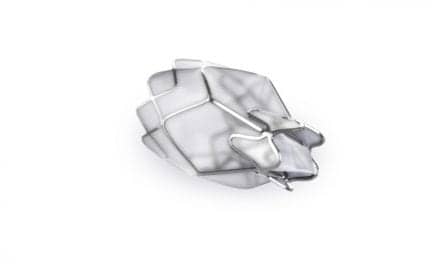Bilevel positive airway pressure therapy is a viable and effective option for patients who struggle to breathe due to COPD exacerbations and those with COPD-OSA overlap.
By Dillon Stickle
The use of noninvasive ventilation (NIV) is a proven treatment option for chronic obstructive pulmonary disease (COPD) patients, including those with sleep disorders such as obstructive sleep apnea (OSA). Bilevel positive airway pressure (BiPAP) is a common therapy choice for this population and can simultaneously improve ventilation and quality of sleep.
So, what is BiPAP and how does it differ from other PAP therapies? A bilevel device provides an inspiratory, or higher pressure on inhalation, while providing an expiratory, or lower pressure on exhalation, according to Denise Hartsell, RRT, RPSGT, senior product manager, ventilation, at ResMed. “This is ideal for patients with COPD who often have difficulty exhaling,” she said. “Bilevels differ from continuous positive airway pressure (CPAP) machines that provide air at a single constant pressure and automatic (APAP) machines that auto-adjust a patient’s airway pressure breath by breath, but still deliver the same pressure during inhalation and exhalation.”
Research Perspective
How does BiPAP treat COPD patients who don’t have sleep apnea? Bilevel works by splinting the upper airway, while providing additional pressure support to increase a patient’s ventilation, according to Hartsell. “COPD patients often have difficulty exhaling air, which can lead to air trapping and hyperinflation,” she said. “Maintaining synchrony and comfort for these patients is critical in getting them compliant on their therapy, which generally cannot be accomplished with a CPAP device. Clinical studies show that bilevel treatment can improve COPD patient outcomes—leading to a better quality of life, reducing the reoccurrence of exacerbations and reducing hospital readmissions.”
In a 2017 study, researchers set out to compare the efficacy of NIV applied in conjunction with usual care versus usual care involving no mechanical ventilation alone in adults with acute hypercapnic respiratory failure (AHRF) due to acute exacerbation of chronic obstructive pulmonary disease (AECOPD).1
The researchers, in their study published in the Cochrane Database of Systematic Reviews, compared data on the use of NIV with BiPAP in patients with AECOPD with data on individuals who underwent usual care without NIV.
The results showed that NIV is “beneficial as a first-line intervention in conjunction with usual care for reducing the likelihood of mortality and endotracheal intubation in patients admitted with acute hypercapnic respiratory failure secondary to an acute exacerbation of chronic obstructive pulmonary disease (COPD),” according to the study.
In another study from last year, published in the Pakistan Journal of Medicine Sciences, researchers studied the effects of using BiPAP through endotracheal tube in comatose COPD patients with hypercapnic respiratory failure.2 The prospective study looked at individuals who were applied BiPAP through an endotracheal tube. The response on blood gases and neurological status was also evaluated.
The BiPAP success rate was high at 70.5%. This led the researchers to conclude that “the use of BiPAP through endotracheal tube can be an effective and safe intervention for comatose COPD patients with hypercapnic respiratory failure.”
The safety profile of BiPAP is very safe with a majority of complications arising due to mask fitting problems, although some side effects — mild bloating of the stomach, dry mouth, eye irritation, and sinus pain — have been reported.4
COPD-OSA Overlap Syndrome
Both COPD and OSA are highly prevalent, so it comes as no surprise that many patients have what is called the COPD-OSA overlap syndrome. This overlap has been reported to raise mortality risk according to a 2015 study in which researchers sought to test the idea that there is a high prevalence of OSA in COPD patients. Out of forty-four patients who had full polysomnography suitable for analysis, OSA was present in 29 of those individuals (65.9%).3
So, does BiPAP succeed in treating this overlap syndrome? Hartsell says yes. “While providing increased ventilation through pressure support, the upper airway is splinted by use of expiratory positive airway pressure (EPAP),” she said. “This offers the overlap patient the benefit of additional ventilation, while ensuring their sleep apnea is well controlled.”
Hartsell added that COPD and overlap are real problems and are affecting more and more of the population, and that when COPD is suspected, objective testing should be performed to confirm the diagnosis, and physicians should then consider screening for OSA. “There are several easy tools to help screen COPD patients for OSA, as well as signs and symptoms to look for when ruling out OSA in COPD patients,” she said. “Confirming each diagnosis allows an optimal treatment plan to be developed.”
Technology
There are several bilevel devices on the market that can provide relief for patients. For example, ResMed offers a full portfolio of bilevel devices for the treatment of patients with ventilation needs, according to Hartsell. “VPAP COPD is a bilevel device specifically intended for those with respiratory insufficiency related to COPD. Its default settings make initial setup of COPD patients quick and easy, while default settings can help minimize hyperinflation and improve patient comfort.”
COPD and COPD-OSA overlap can negatively affect an individual’s quality of life. But with the implementation of BiPAP therapy, these individuals can sleep and breathe better. RT
For more information, contact [email protected].
References
- Osadnik CR, et al. Noninvasive ventilation for the management of acute hypercapnic respiratory failure due to exacerbation of chronic obstructive pulmonary disease. Cochrane Clinical Answers. 2017. doi:10.1002/cca.1820.
- Akhter N, Rizvi NA. Application of BiPAP through Endotracheal Tube in Comatose Patients with COPD Exacerbation. Pakistan Journal of Medical Sciences. 2017;33(6):1444-1448. doi:10.12669/pjms.336.13972.
- Soler X, Gaio E, Powell FL, et al. High Prevalence of Obstructive Sleep Apnea in Patients with Moderate to Severe Chronic Obstructive Pulmonary Disease. Annals of the American Thoracic Society. 2015;12(8):1219-1225. doi:10.1513/AnnalsATS.201407-336OC.
- Railton, D. (2018, April 27). “Do BiPAP machines work for COPD?” Medical News Today.









